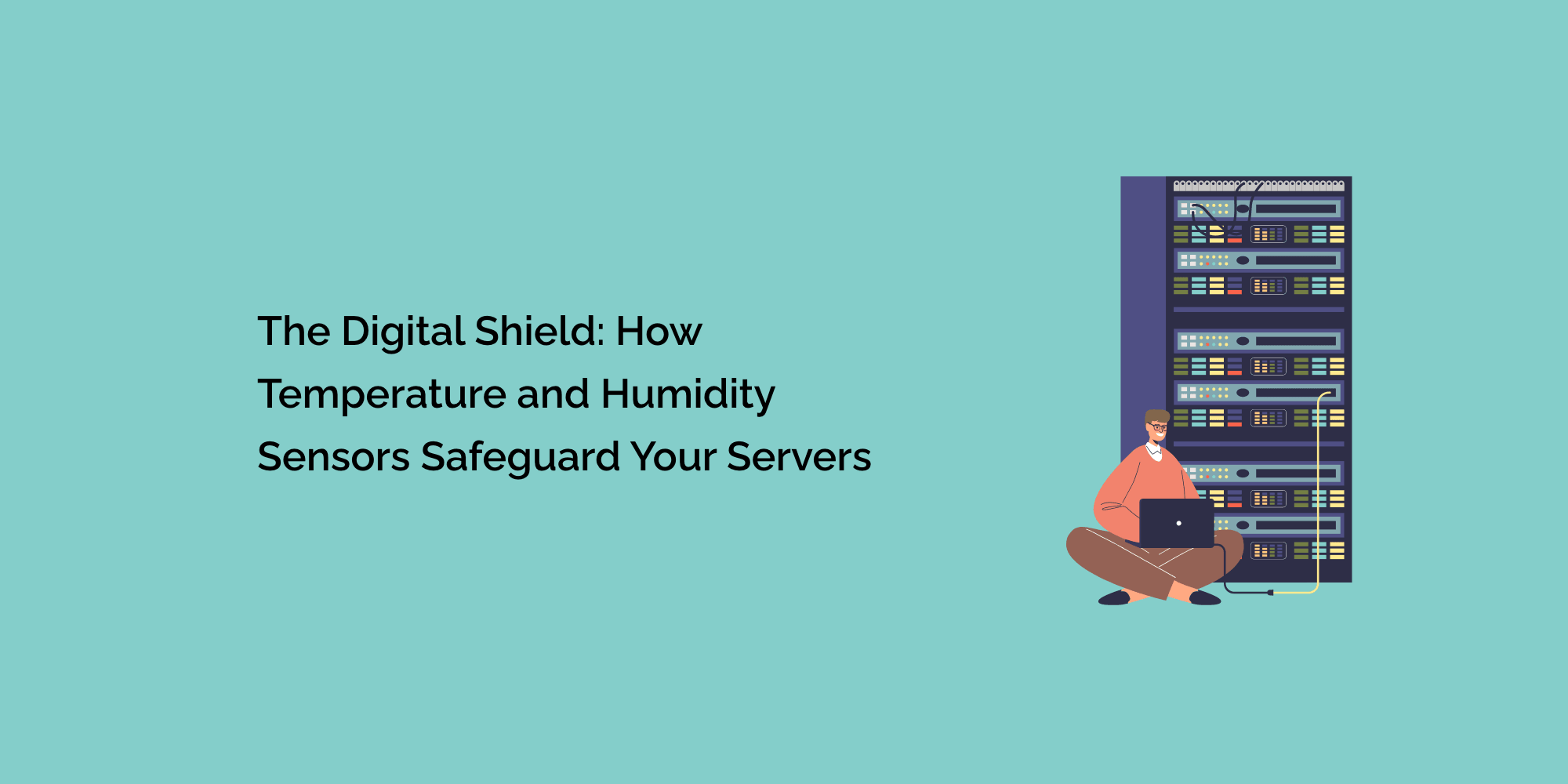In today's digital landscape, data is the lifeblood of businesses and organizations worldwide. Servers and data centers are the guardians of this invaluable resource, ensuring its accessibility and security. Yet, these essential hubs face an unseen threat - the environment within which they operate. Fluctuations in temperature and humidity levels can jeopardize server health, potentially leading to data loss, hardware failures, and costly downtime.
This comprehensive guide explores the critical role of temperature and humidity sensors in safeguarding servers and data centers. We'll delve into the science behind server room conditions, the significance of temperature and humidity control, the types of sensors available, best practices for their implementation, real-world success stories, and a glimpse into the future of sensor-driven server room management.
The Age of Data Dominance
Understanding the importance of data and the central role of server rooms:
-
Data as Currency: How data has become the most valuable asset for modern organizations.
-
Server Rooms as Guardians: Recognizing server rooms as the protectors of data integrity.
-
Environmental Challenges: The often underestimated threats faced by server rooms and data centers.
The Science of Server Room Conditions
Exploring the science behind temperature and humidity and their significance in server room safety:
-
Temperature's Impact: How temperature affects server performance, hardware longevity, and energy efficiency.
-
Humidity's Crucial Role: The importance of humidity in preventing static electricity, equipment damage, and human comfort.
-
Harmonizing the Environment: Understanding the intricate balance between temperature and humidity in server room management.
The Evolution of Sensor Technology
A historical overview of sensor technology and its applications in server room management:
-
Early Monitoring Techniques: Basic methods for gauging server room conditions.
-
Digital Sensor Revolution: The emergence of digital sensors and their advantages.
-
Wireless and IoT Sensors: The transition to wireless and Internet of Things (IoT) technologies for comprehensive monitoring.
Types of Sensors for Server Room Safety
An exploration of the different sensor technologies available:
-
Temperature Sensors: Understanding resistance temperature detectors (RTDs), thermocouples, and infrared sensors.
-
Humidity Sensors: How capacitive and resistive humidity sensors provide accurate measurements.
-
Combined Sensors: The benefits of sensors that measure both temperature and humidity.
Benefits of Sensor-Driven Server Room Management
An in-depth look at the advantages of using sensors in server room safety:
-
Hardware Protection: How sensors prevent overheating, condensation, and equipment failures.
-
Data Security: Ensuring server rooms maintain optimal conditions for data integrity.
-
Energy Efficiency: Examples of sensors optimizing cooling systems for reduced energy consumption.
Best Practices for Implementing Sensors
Guidelines for effectively integrating sensors into server room management:
-
Strategic Sensor Placement: Positioning sensors for comprehensive coverage and timely alerts.
-
Data Integration: Seamlessly incorporating sensor data into server room management systems.
-
Alert Systems: Configuring alerts and notifications for prompt responses to environmental deviations.
-
Calibration and Maintenance: Ensuring sensors remain accurate and reliable through regular upkeep.
Real-World Success Stories
Examining real-world scenarios where sensor-driven management has prevented server room disasters:
-
Downtime Mitigation: Case studies showcasing how sensors saved organizations from costly downtime.
-
Data Protection: Examples of sensors preserving data integrity and preventing loss.
-
Energy Savings: Instances where sensors played a pivotal role in reducing cooling costs.
The Future of Sensor-Driven Server Room Management
A glimpse into the promising future of sensor-driven server room management:
-
AI and Machine Learning: The role of artificial intelligence in optimizing server room conditions and responses.
-
IoT Integration: Sensors becoming part of the broader Internet of Things (IoT) ecosystem for comprehensive monitoring.
-
Sustainability and Efficiency: How sensor technology promotes energy-efficient and sustainable server room management.
Conclusion
In a world where data is paramount, server rooms and data centers are the guardians of digital treasures. As you celebrate the prevention of disasters, data security, and energy savings in your server room, remember that temperature and humidity sensors are your unwavering protectors. In an era where uninterrupted operations are non-negotiable, embracing this technology isn't just an option; it's a necessity for ensuring the safety and reliability of your critical IT infrastructure. With sensors as your digital shield, your server room will remain a bastion of data security and business continuity, preserving the digital backbone of your organization.








